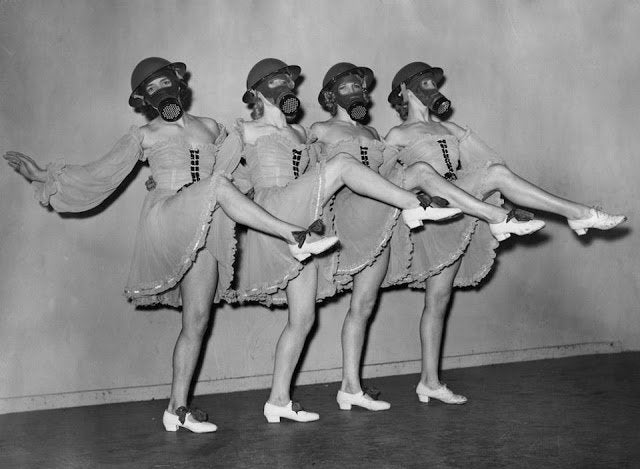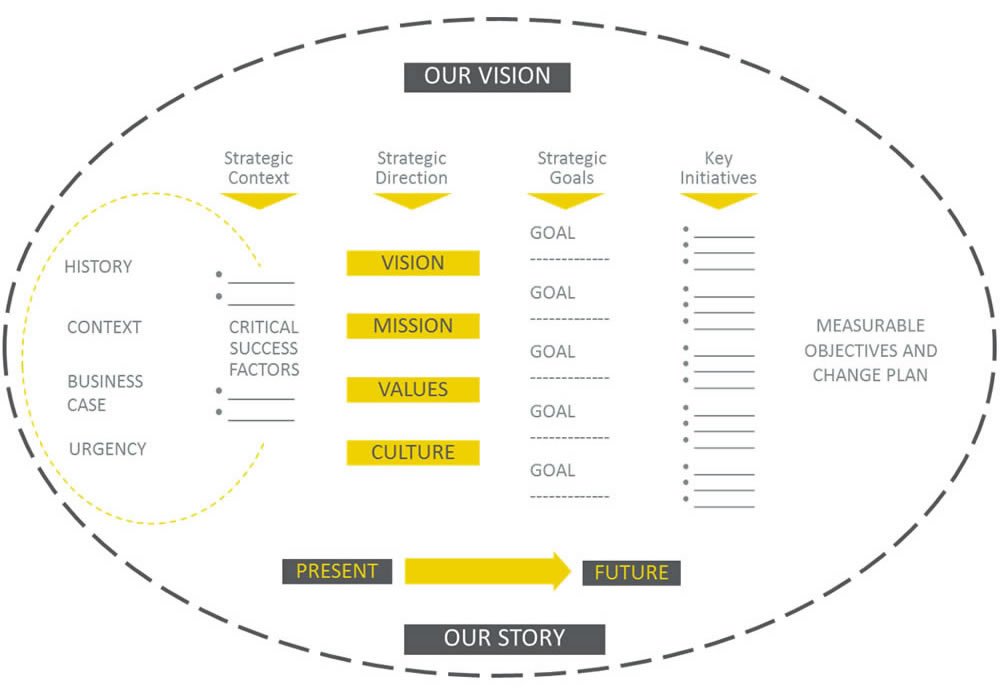This pandemic is a serious threat to all of us and tragedy for some, but organizational life has to and does go on. Generations that have faced catastrophes have learned to stay hopeful and focused on the future while confronting the present. As the motto of the London’s Windmill Theatre during the Second World War said, “We never closed”. In this spirit, how should organizations react today and how should we prepare for what will follow?
EX TENEBRIS LUX ?
Plagues such as the COVID-19 pandemic have always been part of human history. From the Black Death that ravaged Europe in the 14th century, to the Great Plague of London in 1665, and in more recent memory the Spanish Flu epidemic of 1918 (estimated to have caused 17-50 million deaths), our forebears have wrestled with pandemics of novel infections. While they generally had the advantage of living in primarily rural societies with relatively small urban centres, they had the great disadvantage of being unable to identify even the source of the problem quickly, let alone to respond to it by any means other than physical distancing.

A typical self-isolating response was that depicted by Giovanni Boccaccio in The Decameron (1348-1353). This book, which remains popular today, contains 100 love stories told by a group of 10 young people, all fleeing Florence for a villa in the countryside to escape the Black Death which was spreading through the city. Though a work of fiction, The Decameron was set in a context that was familiar in Italy and across Europe at a time when pandemics were a normal if unwelcome part of life.
A great advantage we have today is that science enables us to identify the coronavirus and work on treatments and a vaccine with a reasonable expectation of early results. Furthermore, modern technology enables us to share information real-time across the world. A great disadvantage we have though, because there’s been no pandemic of this scale for over a century, is that we have little experience or guidance on how to adjust our social, political and professional responses in such times.
In this context we and most of our clients are reflecting both on how to lead teams and orchestrate change at a distance and reflecting on what may be the new-normal in several months once the immediate danger of COVID 19 has passed.
Right now, we must all manage in circumstances where many households are invaded by the workplace and often by young children too, disrupting both normal domestic routines and family relationships. This combines with a lack of the habitual proximity and frequent in-person interactions with coworkers, leaving people disoriented and unsure about what’s going on at work.
On the other hand, many people have freed up travel time to, from or for work (about 40 hours a month for many) as well as time previously taken up in face-to-face workplace team interaction. The result is a workday at a home workstation where a lot can be accomplished, but that can also seem disconcertingly devoid of routine activity and structure. We must all get used to doing without much of what we took for granted about work.
So, in these circumstances how do we make our team members, even those used to working at a distance, comfortable working from home? What are the appropriate substitutes for the formerly normal interactions of the face-to-face workplace? How do we find ways to ensure that at a time of enforced physical distancing we encourage social connection and cohesion?
In this new world we are fortunate that most people have smartphone and internet access and can be connected through cloud collaboration platforms such as Slack, Zoom or Microsoft Teams. A sensible but selective use of these technologies can enable social interaction and team working in a virtual piazza.
More important are considerations of team working, connection, caring and support and, yes, discipline. If we look at the classic requirements for orchestrating change, we know that this requires attention to both the “hard” tangible requirements of project management and to the “soft” intangible requirements for involvement, engagement, motivation and belonging.
With respect to the tangible requirements, it can be challenging to keep a project on track with no face-to-face contact, hence a need for clear and structured activities, explicitly and frequently communicated and tracked. In some ways it is easier to deal with these tangible requirements than the “soft” intangible side, where the lack of physical proximity and gatherings create a void that it takes an effort to fill. Particular attention needs to be paid to frequent interactions, a greater emphasis on initiatives to engage and involve team members, and the kinds of formal and informal support and counselling that will help those most affected adapt to the new circumstances. A person whose entire life has been regulated around the 9-to-5 norm of office work will find the change an emotional roller coaster. No two circumstances are the same, but leaders are typically considering initiatives such as:
- General encouragement and emotional support, demonstrating caring and understanding
- Use of videoconferencing and even virtual and augmented reality rather than phone, to enable visual cues and for complex or sensitive conversations
- Opportunities for remote social interaction: video cocktail parties
- Provision of family and life counseling at a distance and/or of Employee Assistance Program services as needed
- Structured daily check ins
- Regular and predictable one on one and/or team calls
- Frequent team and sub- team meetings
- Setting out the new rules of engagement, (e.g. means, frequency, timing of communication)
- New standard operating procedures for the new circumstances (e.g. to protect confidential data in a delocalized world)
- Access to professional performance coaching
- Training needs analysis that reflects the new situation.
In this situation there’s an opportunity to view the changes necessary today as the foundation for new ways of doing things once the disruptive force of the pandemic is over, the new new-normal.
Change managers know that a groups’ acceptance of the need for change opens the door to adaptation and to new ways, so the current situation represents both an opportunity and a responsibility to get things right for the future. Beyond pandemic proofing, we’re working with clients who are looking at where they can innovate, and at things like…
- the opportunity to review their organizational structure and right-size their organization
- whether there’s an opportunity to reposition or redesign their product or service
- possibly changing their sales and marketing processes, including naturally a greater focus on using the web
- how best to create the organizational culture of the future.
For all this, a planning discipline needs to be adopted to refresh an end-to-end and trackable view from high level strategy to short term projects. As this framework becomes clear, new ways of working and the new challenges of the team can be factored into a plan for orchestrating the changes.
The COVID-19 pandemic is serious and frightening. But it is triggering major changes across society, many of which will not disappear as it subsides. We will all have learned to work, socialize, worship and love at a distance, and will have the opportunity to re-set many things almost from scratch. What sort of organization should we design? How should we run our team today and in that new organization?




